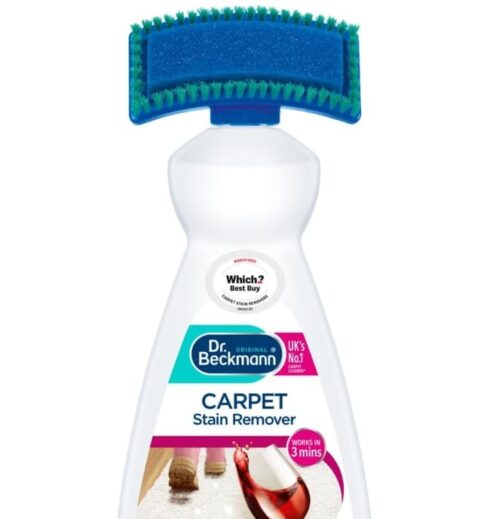
A sofa is one of the most frequently used pieces of furniture in any home. It’s where we relax, entertain guests, and sometimes even enjoy meals. Over time, however, sofas can accumulate dirt, dust, stains, and odors, making them look worn out and unattractive. Regular cleaning not only helps maintain your sofa’s appearance but also extends its lifespan and creates a healthier living environment. In this comprehensive guide, we’ll walk you through the process of cleaning your sofa at home, with tips for different types of fabric and recommended products available on Amazon UK.
Chapter 1: Why Regular Sofa Cleaning Is Important
1.1 Extending the Life of Your Sofa
Regular cleaning helps prevent the buildup of dirt and grime, which can wear down the fabric and padding of your sofa over time. By keeping your sofa clean, you can enjoy it for many years without the need for early replacement.
1.2 Improving Indoor Air Quality
Sofas can trap dust, allergens, and pet dander, which can affect the air quality in your home. Regular cleaning helps remove these particles, making your living space healthier, especially for those with allergies or respiratory issues.
1.3 Enhancing Appearance and Comfort
A clean sofa looks and feels better. Regular cleaning removes stains, eliminates odors, and keeps the fabric looking fresh, making your sofa a more inviting place to relax.
Chapter 2: Identifying Your Sofa’s Fabric Type
2.1 Fabric Types and Their Care Requirements
Before you start cleaning your sofa, it’s important to identify the type of fabric it’s made from, as different materials require different cleaning methods. Common sofa fabrics include:
- Cotton and Linen: Natural fibers that are breathable and comfortable, but they can be prone to staining and may require more delicate cleaning methods.
- Synthetic Fabrics (Polyester, Nylon, Acrylic): Durable and resistant to staining, these fabrics are often easier to clean.
- Leather: A durable and luxurious material that requires special care to maintain its appearance.
- Velvet: A soft and plush fabric that can be delicate and requires gentle cleaning.
- Microfiber: Made from synthetic fibers, microfiber is durable, stain-resistant, and easy to clean.
2.2 Checking the Manufacturer’s Care Label
Most sofas come with a care label that provides cleaning instructions based on the fabric type. The label may include codes like:
- W: Water-based cleaning solutions are safe to use.
- S: Use solvent-based cleaners only.
- WS: Water-based or solvent-based cleaners are safe.
- X: Professional cleaning only; do not use water or solvents.
Following these guidelines will help you choose the right cleaning method and avoid damaging your sofa.
Chapter 3: Gathering the Necessary Cleaning Supplies
3.1 Essential Tools for Sofa Cleaning
To clean your sofa effectively, you’ll need the following tools:
- Vacuum Cleaner with Upholstery Attachment: A vacuum cleaner with an upholstery attachment is essential for removing dust, dirt, and debris from your sofa’s surface. Consider the Shark Corded Stick Vacuum Cleaner available on Amazon UK, which comes with an upholstery tool for easy cleaning.
- Soft Brush: A soft brush helps loosen dirt and fluff up the fabric.
- Microfiber Cloths: Microfiber cloths are gentle on fabrics and effective at absorbing moisture and cleaning solutions.
- Spray Bottle: A spray bottle allows you to apply cleaning solutions evenly.
- Bucket: A bucket for mixing cleaning solutions.
3.2 Recommended Cleaning Products
Based on your sofa’s fabric type, you’ll need different cleaning products:
- Water-Based Upholstery Cleaner: For sofas labeled with a “W” or “WS” code, a water-based cleaner like Dr. Beckmann Carpet Stain Remover is a great choice. It’s available on Amazon UK and works well on a variety of fabrics.
- Solvent-Based Cleaner: For sofas with an “S” code, consider a solvent-based cleaner like Guardsman Dry Cleaning Fluid, which is safe for solvent-only fabrics.
- Leather Cleaner and Conditioner: For leather sofas, a product like Chamberlain’s Leather Milk cleans and conditions leather, keeping it soft and supple.
- Baking Soda: A natural deodorizer, baking soda is useful for removing odors from fabric sofas.
- White Vinegar: A mild, natural cleaner that can be used to remove stains and odors from most fabrics.
Chapter 4: Step-by-Step Guide to Cleaning Your Sofa
4.1 Vacuuming the Sofa
The first step in cleaning your sofa is to vacuum it thoroughly. Use the upholstery attachment on your vacuum cleaner to remove loose dirt, dust, and crumbs from the surface and crevices. Pay special attention to the seams, where dirt can accumulate. This step is essential for preventing dirt from becoming embedded in the fabric during the cleaning process.
4.2 Spot Cleaning Stains
Next, tackle any stains on your sofa. The method you use will depend on the type of stain and fabric:
- For Fabric Sofas: Mix a solution of warm water and a small amount of mild detergent or use a water-based upholstery cleaner like Dr. Beckmann Carpet Stain Remover. Apply the solution to the stain using a microfiber cloth, blotting gently (do not rub) to lift the stain. Rinse the area with clean water and blot dry.
- For Leather Sofas: Use a leather cleaner like Chamberlain’s Leather Milk. Apply a small amount to a soft cloth and gently rub the stain in a circular motion. Wipe away any excess cleaner and buff the area with a dry cloth.
- For Oil-Based Stains: If your sofa’s care label allows, sprinkle baking soda or cornstarch on the stain to absorb the oil. Let it sit for 15 minutes, then vacuum it up. Follow up with an appropriate cleaner.
4.3 Deep Cleaning the Sofa
After spot cleaning, it’s time to deep clean your sofa:
- For Fabric Sofas: Fill a spray bottle with a solution of warm water and mild detergent or use a water-based upholstery cleaner. Lightly mist the sofa with the solution, being careful not to saturate the fabric. Use a soft brush to gently scrub the fabric in a circular motion. Wipe away excess moisture with a clean, dry microfiber cloth. If your sofa is heavily soiled, consider using a steam cleaner, such as the Bissell SpotClean Pro, available on Amazon UK.
- For Leather Sofas: Clean the entire surface with a leather cleaner, applying it with a soft cloth and working it into the leather in a circular motion. Wipe away any excess cleaner with a dry cloth. After cleaning, apply a leather conditioner to keep the leather soft and prevent cracking.
- For Microfiber Sofas: Mix a solution of rubbing alcohol and water in a spray bottle. Lightly mist the sofa and use a soft brush to scrub the fabric. Rubbing alcohol dries quickly and won’t leave watermarks on microfiber.
4.4 Deodorizing the Sofa
To eliminate odors, sprinkle baking soda liberally over the entire sofa and let it sit for at least 30 minutes (or overnight for strong odors). Vacuum up the baking soda using the upholstery attachment. For a fresh scent, you can add a few drops of essential oil to the baking soda before applying it to the sofa.
4.5 Drying the Sofa
After cleaning, allow your sofa to dry completely before using it. If possible, open windows or use a fan to speed up the drying process. Avoid sitting on the sofa until it is fully dry to prevent new stains or impressions from forming.
Chapter 5: Specific Tips for Different Sofa Fabrics
5.1 Cleaning a Velvet Sofa
Velvet sofas require special care due to their delicate and plush fabric. Use a soft brush to remove dirt and dust regularly. For stains, use a solution of mild detergent and water, applied with a soft cloth. Avoid soaking the fabric, and always blot, never rub. Consider using a fabric protector like Scotchgard Fabric & Upholstery Protector, available on Amazon UK, to protect the velvet from stains.
5.2 Cleaning a Leather Sofa
Leather sofas need regular cleaning and conditioning to keep them looking their best. Use a leather cleaner and conditioner, like Chamberlain’s Leather Milk, to clean and moisturize the leather. Avoid using water or harsh chemicals, which can damage the leather. If your sofa has a shiny finish, buff it with a dry cloth after cleaning to restore its luster.
5.3 Cleaning a Microfiber Sofa
Microfiber sofas are relatively easy to clean and maintain. Use a vacuum cleaner with an upholstery attachment to remove dust and dirt. For stains, a mixture of rubbing alcohol and water works well. Lightly mist the fabric and scrub with a soft brush. After cleaning, fluff the fabric with a soft brush to restore its texture.
5.4 Cleaning a Suede Sofa
Suede sofas are sensitive to moisture, so it’s important to use dry cleaning methods. Use a suede brush to remove surface dirt and restore the fabric’s nap. For stains, use a suede eraser or a mixture of white vinegar and water. Apply the solution sparingly and blot with a clean cloth. Avoid using water-based cleaners, which can leave watermarks on suede.
Chapter 6: Preventative Measures to Keep Your Sofa Clean
6.1 Use Sofa Covers
Using a sofa cover is one of the easiest ways to protect your sofa from dirt, stains, and wear. Sofa covers are available in various
materials and styles, and they can be easily removed and washed. Consider a cover like the H. Versailtex Stretch Sofa Cover, available on Amazon UK, which is machine washable and fits most sofa sizes.
6.2 Regular Vacuuming
Vacuum your sofa regularly to prevent dirt and dust from accumulating. This not only keeps your sofa looking clean but also reduces allergens in your home.
6.3 Immediate Stain Treatment
Treat stains as soon as they occur to prevent them from setting into the fabric. Keep a stain remover like Dr. Beckmann Carpet Stain Remover on hand for quick and effective stain removal.
6.4 Avoid Eating and Drinking on the Sofa
To minimize the risk of stains, try to avoid eating and drinking on your sofa. If you do, use a tray to catch spills and crumbs, and clean up any messes immediately.
Chapter 7: Professional Sofa Cleaning Services
7.1 When to Call a Professional
While regular at-home cleaning can keep your sofa in good condition, there are times when professional cleaning is necessary. Consider hiring a professional sofa cleaning service if:
- Your sofa is heavily soiled or stained.
- You have a delicate or expensive fabric that requires special care.
- You want a deep clean that goes beyond surface cleaning.
7.2 What to Expect from Professional Cleaning
Professional cleaners have specialized equipment and cleaning solutions that can effectively remove deep-seated dirt, stains, and odors. They can also apply fabric protectors to help prevent future staining. While professional cleaning is more expensive than DIY methods, it can be worth the investment to restore your sofa to its original condition.
Conclusion
Cleaning your sofa at home doesn’t have to be a daunting task. With the right tools, products, and techniques, you can keep your sofa looking fresh, comfortable, and inviting. Regular maintenance, such as vacuuming and spot cleaning, combined with periodic deep cleaning, will help extend the life of your sofa and keep it in top condition. By following the steps outlined in this guide, you’ll be able to enjoy a clean and beautiful sofa for years to come.







